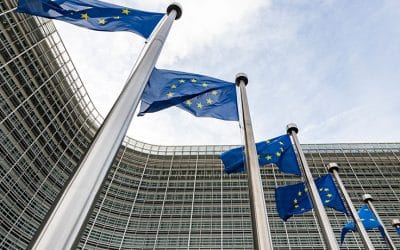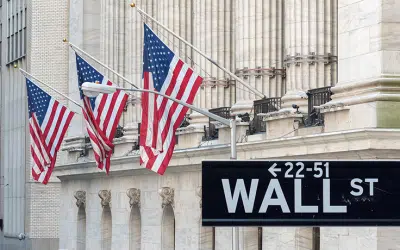U.S. election: What to expect for markets and the economy

Redacción Mapfre
On November 5, the U.S. election will see Democratic Vice President Kamala Harris face off against former Republican President Donald Trump. The resignation of President Joe Biden has added uncertainty to the race: it could shift voter preferences within both parties, and Harris’s policy priorities may differ from Biden’s, leaving markets in unfamiliar territory.
“While analyzing the ideological positions of both parties remains valuable, the personalities of the candidates introduce a significant level of uncertainty,” says Patrick Nielsen, Deputy General Director at MAPFRE AM. Historically, Republicans favor fiscal conservatism and lower taxes, while Democrats advocate for increased public spending, funded by higher revenues. “The key issue is the margin for action after the election. If one party controls both the House and the Senate, the chances of more assertive policymaking increase,” Nielsen adds.
Geopolitical events often trigger sharp, exaggerated market reactions, but Nielsen thinks that elections are different. "The explanation is simple: executive and legislative branches can alter the business environment and influence demand, but laws, taxes, regulations, and standards translate into both costs and opportunities for companies. They represent threats and risks in existing and future products and services,” Nielsen explains.
Foreign policy, which could influence markets, is not a central issue in the campaign; domestic issues are more pressing. “Tensions with China and Russia are likely to continue, as is the trend toward more restrictive trade policies. Donald Trump has largely avoided discussing this topic in detail, and although his rhetoric may seem aggressive, his past approach has often been more conciliatory,” notes Nielsen.
A key domestic issue is the energy transition. Trump has already vowed to roll back recent environmental regulations, while Harris’s party remains committed to decarbonization. Regardless, Nielsen cautions against overreacting to campaign statements or polls, which can often be misleading. “Even if a significant shift occurs on November 5th, it’s important to take measured decisions—haste is rarely a good guide,” he advises.
The state of the U.S. economy
The U.S. economy grew at an annualized rate of 2.8% in the first half of the year, following a 1.4% growth in the first quarter. However, the U.S. is facing a common challenge among developed economies: rising public debt and deficit. MAPFRE Economics has flagged this issue as one of the key risks to the global economy.
“The IMF has echoed these concerns, recently emphasizing the need for a fiscal policy shift to ensure debt sustainability. In the case of the U.S., no election outcome seems poised to deliver such a shift, whether through spending cuts or revenue increases. None of the candidates’ proposals are addressing this issue,” says Eduardo García Castro, senior economist at MAPFRE Economics.
García Castro notes that “a divided government could be the most favorable outcome for managing the deficit.” “Regardless of the election result, it’s an issue that must be tackled. As Federal Reserve Chairman Jerome Powell pointed out earlier this year, it’s time for a serious conversation about the fiscal path forward,” he said.
On the monetary policy front, the Federal Reserve (Fed) decided in its September meeting to lower interest rates by 50 basis points (bps), bringing them to a range of 4.75%-5%. This followed similar actions by the European Central Bank (ECB) and was foreshadowed during the Jackson Hole symposium in August.
The labor market, a key indicator closely watched by the Fed, showed signs of strain over the summer. However, in September, 254,000 non-farm jobs were added, well above the 150,000 expected, while the unemployment rate fell slightly to 4.1%.
“The Fed’s decision to cut rates by 50 bps was nearly unanimous, and they laid out a roadmap for further cuts: an additional 50 bps this year, 100 bps in 2025, and 50 bps in 2026. Their long-term outlook suggests the neutral interest rate will settle between 2.75% and 3.00%, higher than previously anticipated,” García Castro explains.
He also stresses that the rate cut is not influenced by the upcoming elections. “The deeper interpretation of this decision shows that it is a carefully balanced move, with the belief that the economic conditions will continue to support future rate cuts,” he concludes.
How do elections impact other markets?
Javier Lendines, General Manager of MAPFRE AM, explains that in Europe, national stock indices “are generally well-diversified, making it difficult to see a national index performing significantly differently from broader European indices.” “The positive or negative performance of one sector is often offset by the performance of others,” he adds.
In Spain, however, the stock market has experienced sharper declines following election results. For instance, after José María Aznar’s (Popular Party) 1996 win, the IBEX 35 dropped 5.22%, and after José Luis Rodríguez Zapatero’s (Socialist Party) victory in 2004, it fell by 4.15%. Markets tend to favor continuity in the Spanish executive over political change. When Aznar and Zapatero were re-elected, the index saw much smaller declines—1.23% and 0.29%, respectively.
Despite these reactions, Alberto Matellán, Chief Economist at MAPFRE Inversión, emphasizes that growth expectations are the most influential factor for equity markets. He notes that while markets “dislike uncertainty”, the long-term impact of elections is virtually null. He also adds that in today’s global economy, “national policies of individual countries have minimal influence,” except in specific cases.



